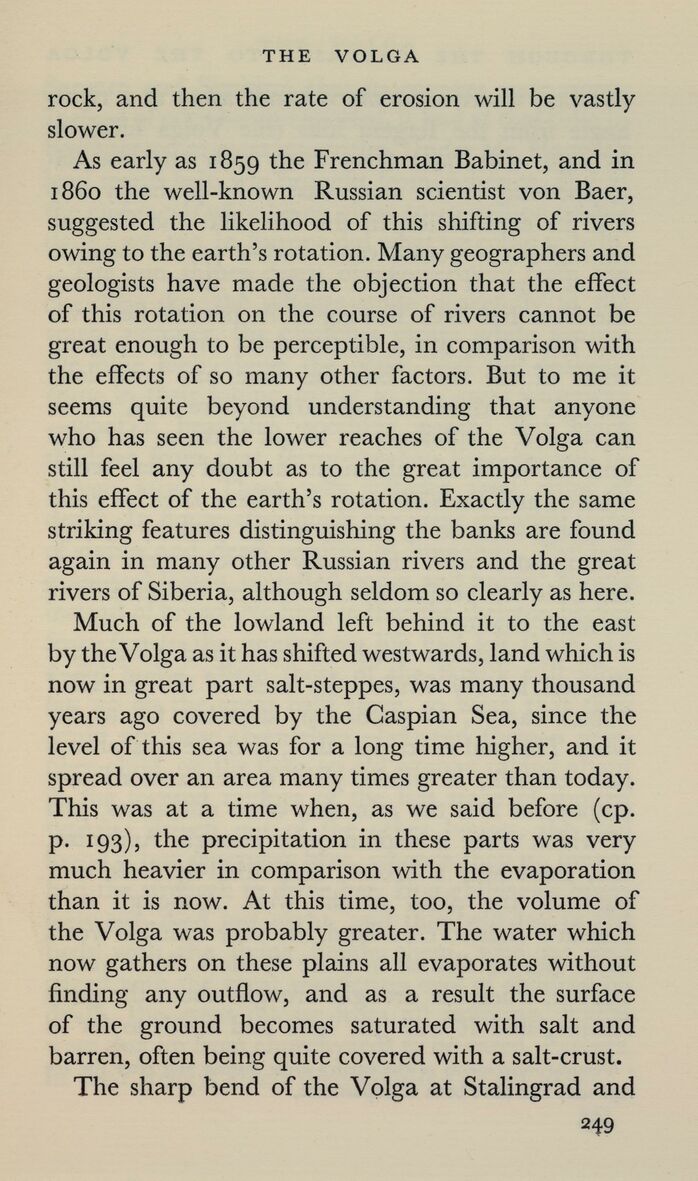
Full resolution (JPEG) - On this page / på denna sida - X. The Volga

<< prev. page << föreg. sida << >> nästa sida >> next page >>
Below is the raw OCR text
from the above scanned image.
Do you see an error? Proofread the page now!
Här nedan syns maskintolkade texten från faksimilbilden ovan.
Ser du något fel? Korrekturläs sidan nu!
This page has never been proofread. / Denna sida har aldrig korrekturlästs.
THE VOLGA
249
rock, and then the rate of erosion will be vastly
slower.
As early as 1859 the Frenchman Babinet, and in
1860 the well-known Russian scientist von Båer,
suggested the likelihood of this shifting of rivers
owing to the earth’s rotation. Many geographers and
geologists have made the objection that the effect
of this rotation on the course of rivers cannot be
great enough to be perceptible, in comparison with
the effects of so many other factors. But to me it
seems quite beyond understanding that anyone
who has seen the lower reaches of the Volga can
still feel any doubt as to the great importance of
this effect of the earth’s rotation. Exactly the same
striking features distinguishing the banks are found
again in many other Russian rivers and the great
rivers of Siberia, although seldom so clearly as here.
Much of the lowland left behind it to the east
by theVolga as it has shifted westwards, land which is
now in great part salt-steppes, was many thousand
years ago covered by the Caspian Sea, since the
level of this sea was for a long time higher, and it
spread over an area many times greater than today.
This was at a time when, as wc said before (cp.
p. 193), the precipitation in these parts was very
much heavier in comparison with the evaporation
than it is now. At this time, too, the volume of
the Volga was probably greater. The water which
now gathers on these plains all evaporates without
finding any outflow, and as a result the surface
of the ground becomes saturated with salt and
barren, often being quite covered with a salt-crust.
The sharp bend of the Volga at Stalingrad and
<< prev. page << föreg. sida << >> nästa sida >> next page >>